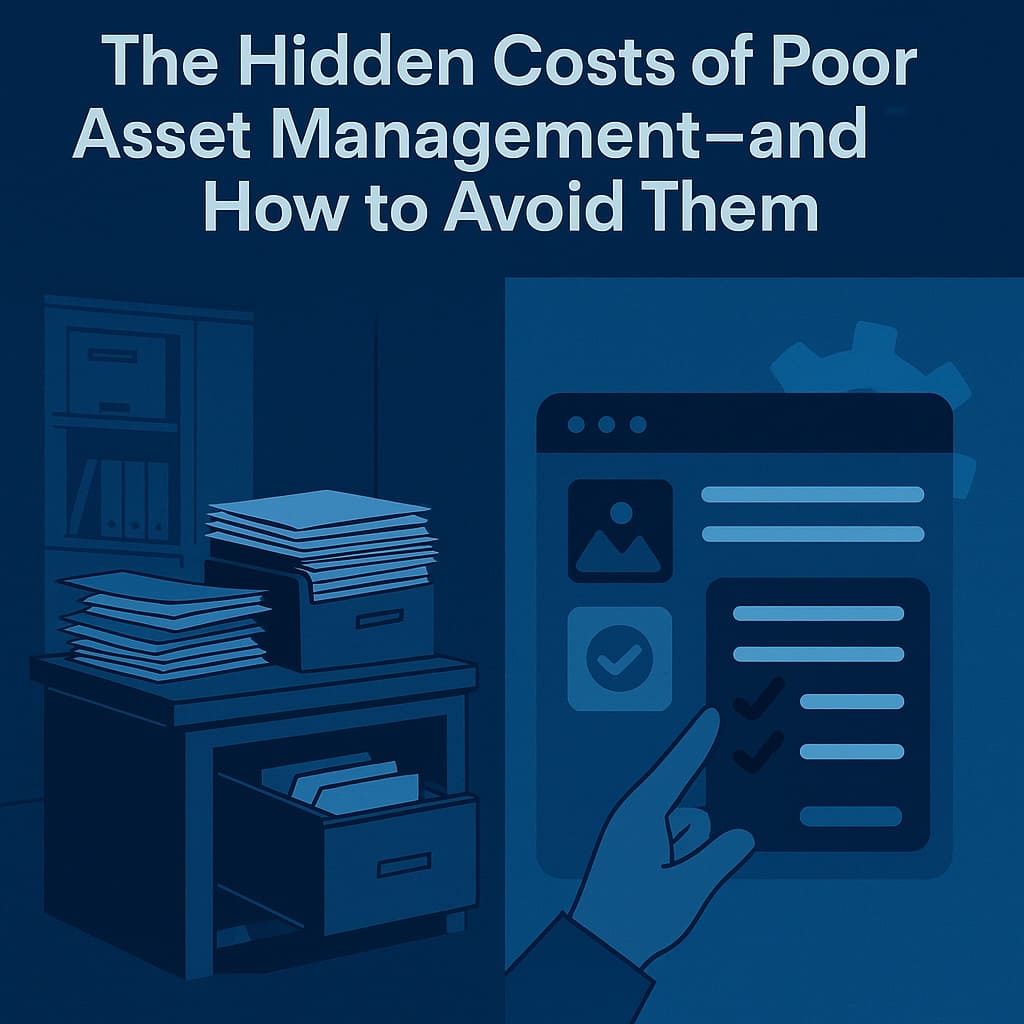
The Hidden Costs of Poor Asset Management —and How to Avoid Them
BlogIn the world of commercial property and facilities management, margins matter. Whether you’re managing a single building or a national portfolio, inefficiencies in asset management can quietly bleed your resources—costing you time, money, and even your professional reputation.
At a glance, poor asset management might look like a few missing files or out-of-date spreadsheets. But underneath these surface issues lie far greater challenges: delayed maintenance, unnecessary equipment replacements, poor compliance documentation, and time-consuming audits. Fortunately, avoiding these pitfalls is possible—if you take the right steps now.
In this article, we explore the hidden costs of poor asset management and show how platforms like AIAssets.io help owners, operations directors, and asset managers streamline their processes, protect their investments, and stay audit-ready.
The True Cost of Getting It Wrong
1. Missed Maintenance = Expensive Repairs
Let’s start with the most obvious risk: when maintenance tasks are overlooked due to a lack of clear asset visibility, minor issues often escalate into major problems.
A leaking HVAC unit might seem insignificant—until it causes widespread ceiling damage or mould remediation expenses. Or a faulty fire pump goes unnoticed during routine checks, leading to insurance non-compliance and costly legal liabilities.
Manual systems relying on static spreadsheets or physical folders make it easy to miss these critical updates. Without automated alerts, lifecycle tracking, and a live view of all assets, maintenance becomes reactive rather than preventative.
Real-world example: A client inherited a building with no reliable records of servicing for critical systems. When a compliance audit occurred, they failed three key checks, resulting in emergency callouts and unplanned expenditure.
2. Incomplete Handover = Lost Knowledge
One of the most damaging—and preventable—asset management failures happens during project handover. Whether it’s a construction-to-operations transition or a change in FM contractors, incomplete or unstructured asset data leads to confusion, delays, and duplicated effort.
Files stored in multiple folders. Unlabeled drawings. No digital trail of servicing history. When key team members leave, their institutional knowledge often walks out the door with them.
The result? Your new team spends weeks rebuilding information that already existed—if only they could find it. That’s productivity lost and money wasted.
3. Duplicated Work = Wasted Hours
Poor asset visibility often leads to duplicated work: re-inspecting equipment that’s already been checked, replacing items without checking warranties, or commissioning reports that already exist elsewhere in the system.
If your asset management process depends on multiple people manually entering data across different tools—or worse, relying on memory—inefficiencies creep in fast.
Imagine this happening across multiple buildings, each with hundreds (or thousands) of assets. That’s not just a productivity issue—it’s a budget drain.
How Digital Asset Management Solves These Problems
Modern digital tools like AIAssets.io offer a smarter, more scalable approach to asset management. At their core, they centralise all your asset information—location data, warranty records, lifecycle history, maintenance logs, handover documentation—into one secure, cloud-based platform.
Here’s how that reduces risk and improves ROI:
Centralised, Accessible Data
With AIAssets.io, every team member—on-site or remote—can access up-to-date information on every asset in the portfolio. No more digging through legacy folders or sending emails to five different people for answers.
Key documents, servicing history, manuals, and schedules are all in one place. This dramatically reduces response times during breakdowns or inspections.
Bonus: It also makes your next audit or handover a smooth, professional process—with all data traceable, timestamped, and easy to share.
Lifecycle Tracking and Cost Visibility
Every asset has a lifecycle—and managing it effectively saves money. With digital FM tools, you can track when an asset was installed, how often it’s been maintained, and what its projected replacement window looks like.
This allows you to plan capital works more effectively and avoid the shock of unbudgeted replacements. AIAssets.io even allows bulk updates, so when your air conditioning contractor completes a sitewide service, the records are instantly reflected across the system.
Smarter Workflows and Accountability
Manual processes rely on trust and memory. Digital workflows use data and automation.
AIAssets.io supports scheduled reminders, photo-based verification, and geotagged asset tagging, ensuring every job is tracked and every action is recorded. This makes accountability straightforward and enables performance benchmarking across teams or contractors.
It also removes the bottlenecks created when only one person “knows where everything is.”
Manual vs Digital Workflows: A Quick Comparison
|
Feature |
Manual Systems |
AIAssets.io (Digital) |
|---|---|---|
|
Asset Collection |
Paper / Notebook / Forms |
Tablet / Mobile Application |
|
Maintenance Reminders |
Outlook calendars or sticky notes |
Automated, scheduled workflows |
|
Document Access |
Local folders or email chains |
Instant, cloud-based access |
|
Audit Readiness |
Time-consuming file collation |
One-click report generation |
|
Lifecycle Forecasting |
Guesswork or memory-based |
Data-backed projections |
|
Handover Process |
Inconsistent, error-prone |
Structured digital records |
|
Collaboration |
Siloed knowledge |
Shared, secure environment |
Avoiding the Hidden Costs: What You Can Do Now
If you’re currently managing assets manually—or juggling multiple disconnected tools—now’s the time to consider how much it might be costing you.
Here are three steps to get started:
1. Audit your current process.
What tools are being used across teams? Are critical documents accessible in seconds—or only after hours of chasing? What’s been missed or duplicated in the last 6 months?
2. Identify quick wins.
Start with one building or one asset class (e.g., HVAC systems or fire services). Map out what’s missing and how long it would take to digitise that data.
3. Trial a smarter tool.
Platforms like AIAssets.io are designed to be easy to onboard and deliver immediate value. You don’t need an IT team or a full digital transformation plan. Start small—and scale fast.
Final Thoughts
In today’s property and facilities landscape, poor asset management isn’t just an operational nuisance—it’s a silent drain on time, budgets, and reputation.
Manual, outdated processes may seem cost-effective on paper, but they hide expenses that mount quickly: from rework and breakdowns to non-compliance and lost productivity.
By investing in a streamlined, centralised platform like AIAssets.io, you gain more than software—you gain visibility, control, and peace of mind.
Ready to eliminate the hidden costs in your portfolio? Visit www.aiassets.io and take the first step toward smarter asset management.




